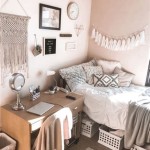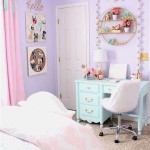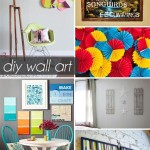DIY Creative Ideas for Home Decor
Home decor represents a significant aspect of personalizing one's living space and reflecting individual taste. While professional interior design services offer comprehensive solutions, engaging in do-it-yourself (DIY) projects provides a cost-effective and highly personalized approach to transforming a house into a home. DIY home decor empowers individuals to express their creativity, recycle existing materials, and achieve unique aesthetics that resonate with their personal style.
This article explores several DIY creative ideas for home decor, focusing on practical projects that can be undertaken with readily available materials and minimal specialized skills. These ideas cater to various tastes and preferences, ranging from simple embellishments to more involved transformations. The emphasis is on projects that are both aesthetically pleasing and functional, contributing to an enhanced and personalized living environment.
Upcycling and Repurposing Existing Items
One of the most sustainable and cost-effective approaches to DIY home decor involves upcycling and repurposing existing items. This practice minimizes waste, reduces consumption, and encourages innovative thinking. Transforming discarded or unused objects into functional and decorative pieces adds a unique character to the home and reflects a commitment to environmental responsibility.
Consider transforming old glass bottles into elegant vases. Thoroughly cleaning and drying the bottles is the initial step. The bottles can then be painted, wrapped in twine, or adorned with decorative stones or beads. Utilizing different sizes and shapes of bottles creates a visually diverse collection. Alternatively, vintage picture frames can be repurposed as decorative trays. Removing the glass and backing allows the frame to be used as a base for displaying candles, small plants, or other decorative objects. Painting the frame in a complementary color or adding decorative embellishments further enhances its aesthetic appeal.
Another example involves repurposing old wooden pallets. These pallets, often discarded by businesses, can be transformed into rustic furniture or decorative wall art. Disassembling the pallet and sanding the individual planks creates raw materials for building coffee tables, headboards, or shelving units. The natural imperfections and variations in the wood add character to the finished product. Alternatively, a section of the pallet can be painted and used as a backdrop for displaying photographs or creating a unique piece of wall art. Attaching hooks to the pallet allows it to function as a key holder or jewelry organizer.
Furthermore, old clothing items can be repurposed into decorative textiles. T-shirts can be cut into strips and woven into rugs or blankets. Denim jeans can be cut and sewn into patchwork quilts or cushion covers. Utilizing different colors and patterns of fabric creates a visually stimulating and personalized design. Buttons, zippers, and other embellishments from old clothing can be used to add unique details to the finished products. This approach extends the lifespan of clothing items and reduces textile waste, contributing to a more sustainable lifestyle.
Finally, consider transforming old books into decorative objects. Removing the pages from a hardcover book allows the cover to be repurposed as a small storage box or display case. The covers can be painted, decoupaged, or adorned with fabric to complement the existing decor. Alternatively, the pages of the book can be folded into intricate shapes and used to create paper sculptures or garlands. This approach adds a literary and artistic touch to the home, transforming discarded books into unique and eye-catching decorative elements.
Creating Personalized Wall Art
Wall art plays a crucial role in defining the aesthetic of a room. While commercially produced artwork is readily available, creating personalized wall art allows individuals to express their unique tastes and create a truly bespoke living space. DIY wall art can be tailored to match specific color schemes, themes, and personal preferences, resulting in a cohesive and visually appealing environment.
One popular DIY wall art technique involves creating abstract paintings. This method requires minimal artistic skill and allows for experimentation with color and texture. Choosing a canvas size that complements the wall space is the initial step. Acrylic paints in various colors are then applied to the canvas using different techniques, such as pouring, splattering, or blending. Layering different colors and textures creates depth and visual interest. The finished artwork can be further embellished with metallic accents, glitter, or other decorative elements. This approach allows for the creation of unique and expressive artwork that reflects personal style.
Another option is to create personalized photo collages. Selecting a collection of photographs that hold personal significance is the first step. These photographs can be arranged in a variety of ways, such as a grid, a heart shape, or a free-form design. The photographs can be printed in different sizes and cropped to fit the desired arrangement. Attaching the photographs to a large piece of cardboard or foam board creates a cohesive collage. The collage can then be framed or hung directly on the wall. This approach allows for the creation of a personalized and sentimental piece of wall art that showcases cherished memories.
Furthermore, consider creating wall art using pressed flowers or leaves. Collecting flowers and leaves from the garden or during nature walks provides the raw materials for this project. The flowers and leaves are then pressed between sheets of newspaper or blotting paper for several weeks to remove moisture. Once dried, the pressed flowers and leaves can be arranged on a piece of paper or fabric and glued in place. Framing the arrangement creates a delicate and natural piece of wall art. This approach adds a touch of nature to the home and creates a visually appealing and unique decorative element.
Another option involves creating string art. This technique involves hammering nails into a piece of wood in a predetermined pattern and then wrapping colored string around the nails to create a geometric design or an image. Choosing a simple design, such as a heart or a star, is a good starting point. The nails should be hammered in evenly and securely. Wrapping the string around the nails in different directions creates texture and visual interest. This approach allows for the creation of a modern and visually striking piece of wall art that can be customized to match any decor.
Enhancing Home Decor with Handmade Textiles
Textiles play a significant role in adding warmth, texture, and visual interest to a home. Handmade textiles offer a unique and personalized touch, allowing individuals to create decorative elements that reflect their personal style and skill. DIY textile projects range from simple embellishments to more involved creations, offering options for individuals of all skill levels.
One simple DIY textile project involves creating decorative cushion covers. Choosing fabrics in complementary colors and patterns is the initial step. Cutting the fabric to the desired size and sewing the seams creates a basic cushion cover. The cover can then be embellished with decorative buttons, tassels, or embroidery. Experimenting with different fabric textures and embellishment techniques allows for the creation of unique and personalized cushion covers that enhance the aesthetic of the living room or bedroom. Adding a zipper or button closure allows for easy removal and cleaning of the cover.
Another option is to create a knitted or crocheted blanket. Choosing a yarn in a favorite color and texture is the first step. Learning basic knitting or crocheting stitches allows for the creation of a simple blanket pattern. The blanket can be made in any size, from a small lap blanket to a large bedspread. Adding decorative fringes or tassels enhances the visual appeal of the finished blanket. This approach allows for the creation of a cozy and personalized textile element that adds warmth and comfort to the home.
Furthermore, consider creating a macramé wall hanging. Macramé is a knotting technique that can be used to create intricate patterns and designs. Choosing a natural fiber cord, such as cotton or jute, is the first step. Learning basic macramé knots allows for the creation of a variety of patterns. The wall hanging can be embellished with beads, feathers, or other decorative elements. This approach allows for the creation of a bohemian and visually appealing piece of wall art that adds texture and character to the home.
Another option involves creating a tie-dye tapestry. Choosing a white cotton fabric as the base is the first step. Folding and tying the fabric in various patterns creates a resist that will prevent the dye from penetrating certain areas. Applying different colors of dye to the fabric creates a vibrant and unique design. The tapestry can be hung on the wall or used as a tablecloth or bedspread. This approach allows for the creation of a colorful and personalized textile element that adds a playful and artistic touch to the home.

36 Diy Home Decor Projects Easy Craft Ideas For Decorating

900 Best Diy Home Decor Ideas In 2025

50 Beautiful Diy Wall Art Ideas For Your Home Decor

Top 20 Home Decor Ideas You Can Easily Diy Room

20 Diy Room Decor Ideas For The Win Unique With Images

Your Complete Guide To Diy Home Decor Ideas Photojaanic

Diy Home Decor Ideas To Inspire Creative Living Aapkapainter

50 Fun And Easy Diy Room Decor Ideas That Won T Break The Bank

Repurposed And Creative Home Decor Reinvented Delaware

6 Creative Diy Wall Hanging Ideas For Home Decor







